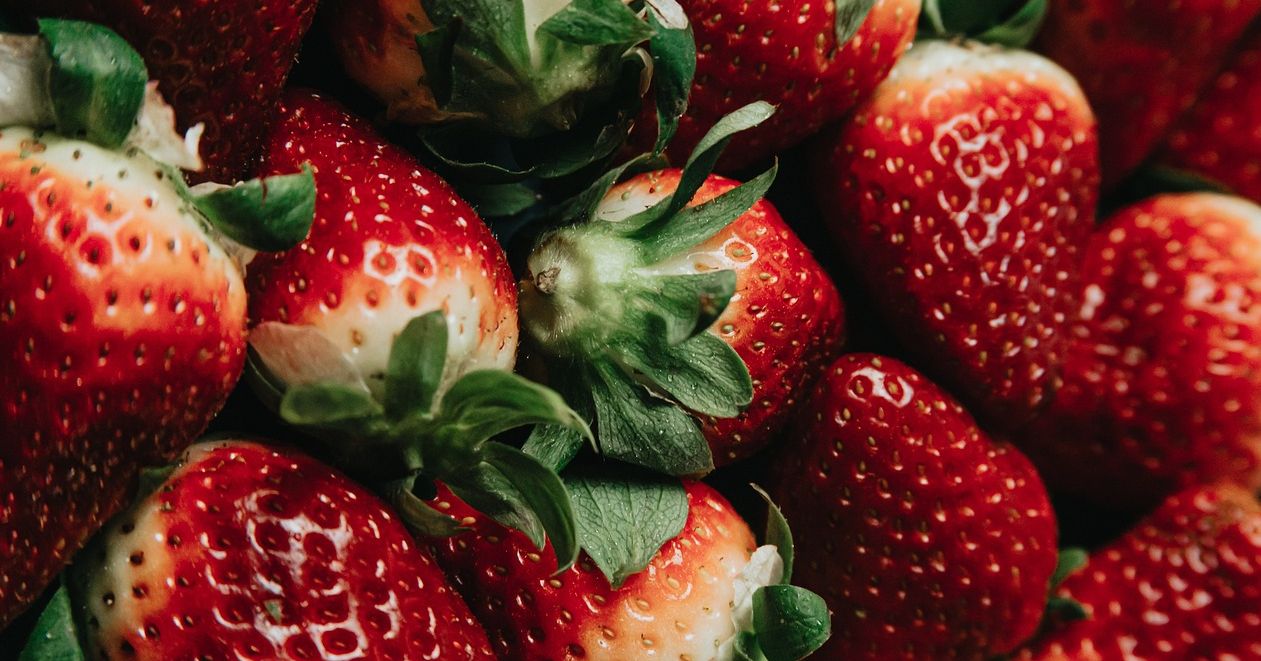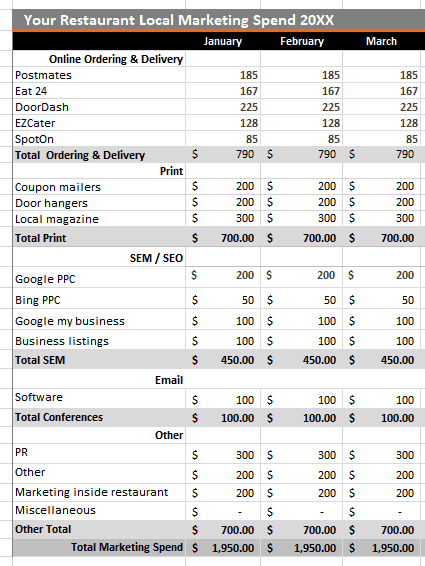What is the first rule of marketing? (Solved!)
Many think marketing is done by a master sitting atop a mountain waiting to be struck by creative genius. While […]
Read More »Become a successful marketing consultant: Learn more

If you have ever wondered how to sell food online, this is the article for you!
That’s because in this article we will clearly outline a 7 step plan on how you can sell food online.
In fact, I work for a wonderful eCommerce food company that, by definition, sells food (a lot of food) on the internet. In this article I will reveal a simple plan that you can follow to also successfully food online.
How to sell food online
You can sell food online by following these 7 steps: 1. Understand state and federal laws, 2. Choose a niche, 3. Create a working business model, 4. Build a unique brand, 5. Do your math, 6. Create an Ecommerce store, 7. Promote your food business
Customers love ordering food online and having it delivered. Whether it's hot food as a convenient dinner, a Latte on ice, or a specialty niche product with a longer shelf life, online food sales is a great, big business.
Let’s now review how you can do the same and sell food online.
Whether your restaurant is looking to expand and sell more food online, or you want to launch an eCommerce food brand, selling food online is a great service for many reasons.
Below is an example of a screenshot from Danone.com, a France-based company and one of the largest food sellers in the world. I personally am not a fan of their branding, their use of online media, not their messaging, but they must have intensely-good distribution channels set up and they probably adhere to food quality procedures very efficiently.
Regardless, they seem to keep things very simple. And as we get started in food marketing, this is very important: keep it simple and focus on the benefit to the customer.
Some people are reluctant to leave their homes due to harsh weather, while others hate the traffic. Others are in the food business, whether as a food blogger, a professional chef, in the hospitality business or own a Bed & Breakfast and need food supplies. Or, huge numbers of people live in remote areas and like to buy food in bulk quantities, while others like to stock up for winter.
Regardless of the reason for people buying food online, there are almost endless sub niches of people who would like to know your food is online and available for them to buy.
Whatever the reason, your food brand can target people who want to buy your food product online.
Your job is to do your research and target them.
While there are many rules, regulations, and challenges to consider in selling food online, there is money to be made.
That’s because people buy food.
But once you know the regulations involved based on your target market, it is possible for you to establish and run a thriving online food business. Here is how you can do it, too.
First, you need to understand state and federal laws governing online food businesses. The food industry can be risky, and you want to avoid anything going wrong, such as food poisoning or inappropriate packaging. Ensure you are familiar with the Cottage Food Laws if you operate your food business from home. Also know that if you sell to a customer in another state, you need to know the interstate laws.
You will also need to:
Getting food safety certification reassures your clients and keeps you out of trouble.
Additionally, if you are looking to sell organic food, non GMO, kosher, or other specialty food, there will be additional rules you will need to follow and abide by.
It would be very helpful for you to review this article that reviews the top food producers in the world. There are some great strategies here to give you a foundation for your food business:
What is the Biggest Agricultural Company in the US? (+Top 5)
Passion, health, hobby, and family history usually inspires business ideas for most people, and the same applies to online food businesses.
Look for inspiration online if you have no idea what food you want to sell.
Look for food trends like creative condiments and plant-based fish.
Social media platforms, food publications, and Google Trends are good sources of niche ideas.
Gaps in the food market are excellent sources of business ideas.
You can explore gaps in niches like ethical and religious, certified organic and natural ingredients, dietary restrictions, novelty, or custom products.
You can also adopt unique family food, watch videos, or read cookbooks and recipes for inspiration.
Whatever path you decide to explore, this is part of your market research phase.
Here are two excellent and very helpful articles to help you with your market research:
How to Conduct Market Research for your Business Idea
8 Market Research Strategies used by Marketing Professionals
Once you have niched down, it is time to create a working business model. Produced and curated are the two main business models. For the produced category, you make your own food from scratch, either from a commercial facility or home, then sell it directly to your clients.
The curated business model involves curing, repacking then reselling other people’s food under your brand. Dropshipping is also good for selling another brand's food in a new market.
After settling on the business model of choice, find a certified supplier.

Branding involves the way you package and label products. Your branding reflects how you want the potential consumers to see your product. The branding should be clearly visible on product pages, package designs, product labels, and website copy.
Since the clients cannot taste food online, your branding creates a strong mental image of taste and aroma.
While improving the visual appeal, remember to follow the packaging requirement for your target market. This includes allergen warnings, best-before dates, country of origin, and nutritional information.
If you intend to ship across borders, ensure your branding adheres to the packaging and labeling requirements of the destination country.
Look for areas where you can improve upon the category you are going to compete in. Here is an excellent article that will help you develop your unique selling proposition and value proposition:
Unique Selling Proposition vs. Value Proposition (with examples)
For an excellent article on branding your company, go here:
How Do You Brand a Manufacturing Company? (7 action steps)
Research industry prices to find out what your competitors are charging. This gives you an idea of the ideal pricing strategies for a good start. Also, consider the startup and overhead costs of similar business models.
Proceed to calculate profit margins because the whole idea of starting an online food business is making a profit.
Charging too much will discourage potential consumers, while charging too little messes with your profit margins.
Additionally, low prices can imply low quality in certain food niches. Striking the right balance will make or destroy your business.
For a very helpful article that will help you to establish some benchmarking goals for you business, visit this resource:
Food manufacturing financial ratios (Hormel vs Pepsi vs Nestle)
Once your product is ready, you need a platform or a shop where the consumers can find the food online.
Platforms like Shopify and other platforms found in our tools section are excellent for beginners because they are easy to set up and customize. The platform should aid inventory management and have an excellent payment and shipping system.
You can also create a website dedicated to selling your brand products. Visuals are key, so the imagery, colors, and product descriptions should leave the consumers salivating.
Don't forget to include About Us, FAQs, Blog, and Content pages.
Here are two excellent articles that will help you succeed selling online:
How Do You Market a Food and Beverage Business Online? (+examples)
Best Strategies for Ecommerce Marketing (Free template)
Any additional accreditation, certifications, awards or other recognition will be an added advantage.
The final steps involve letting potential consumers know your online food business exists. There are multiple ways of drawing attention to your online store. Uploading irresistible pictures of food on Facebook and Instagram is a good start.
To get started quickly in promoting your food business, here is an excellent article that will help you:
Top 3 Forms of Advertising Marketing That a Food Business Should Use
How Do Food Companies Advertise Their Products? (6 tasty ways)
Videos are even more appealing than static pictures. You can post mouth-watering videos of your food on Instagram Stories, Facebook Shorts, WhatsApp statuses, and TikTok videos.
For those with good startup capital, you can hire famous food influencers to promote your brand on their sites or in mainstream media. You can try guest blogging if you are on a budget. Other great ways of promoting your food business online include cooking educational channels, posting on Pinterest, and partnering with other food companies.
Also, when advertising and promoting your food, be sure to follow the FTC rules, it is especially important to follow the email rules (CAN-SPAM act). Go here for a very helpful article:
What are the Regulatory Laws of Advertising? (+7 email rules)
For an excellent article with many marketing lessons from the biggest food sellers in the world, go here:
Marketing lessons from the most popular food companies (Top 10 brands)
To see more articles about marketing and advertising your food business, you are invited to review the articles here: